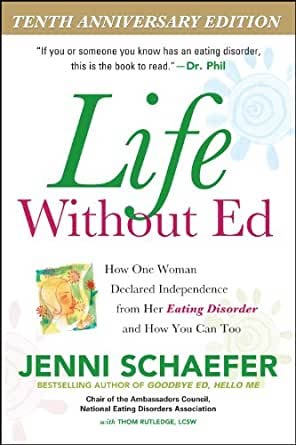Reforzar la lecto-escritura de nuestros hij@s en vacaciones
Se acercan las vacaciones de verano y los padres se debaten entre “lo dejo descansar, pero y si pierde la rutina?” …”Ni hablar, durante el verano hay que leer y hacer tareas. Aunque pobre, se merece un descanso”.
Lo cierto es que las vacaciones y las actividades de lecto-escritura no tienen porqué ir reñidas. Se puede leer, escribir e incluso resolver problemas matemáticos disfrutando de las tan merecidas vacaciones! Es más, ¿no pueden ser el leer y escribir pasatiempos placenteros? Claro que si! Todo depende del “cristal con que se mire”.
Las tareas de lecto-escritura suelen resultar tediosas cuando tenemos que leer un libro que no nos atrapa para luego responder preguntas sobre él, y encima hay que responderlas bien; o cuando nos están haciendo dictados sin sentido o escribir una lista interminable de palabras o frases para mejorar la letra. Pero ¿a quién no le gusta tumbarse bajo un árbol con ese libro que tanto nos gusta, devorarlo y luego poder contárselo a alguien? ¿A qué respondemos gustosos si encima ese otro demuestra interés y nos hace miles de preguntas al respecto?
Pues eso. A los niños les pasa igual. Entonces, la clave está en hacer de esa actividad algo atractivo o que suponga alguna utilidad. Por ejemplo:
- Leer un libro es mucho más llamativo si ha sido el niño el que ha escogido el libro que quería leer. O si puede compartir de esa lectura con mamá y/o papá, quienes dedicaran exclusividad absoluta durante el tiempo que dure la lectura o el comentario de la misma (escucharlos es un factor fundamental para motivar a los niños). O si el libro nos permite soñar e imaginar que somos los personajes y podemos hacer una interpretación con las ideas principales y cambiando el final según nos guste más. O si queremos hacer una comida especial y hay que buscar y leer la receta.
- Escribir las palabras del dictado tiene más sentido y lo harán con más ganas si se hace para ayudar a mamá y/o papá con la lista de la compra, que luego podemos chequear en el supermercado a la vez que vamos comprobando precios por si mamá o papá no han traído suficiente dinero (y así de paso sumamos y resolvemos este problema matemático). Escribir frases se torna natural y se hace con más esfuerzo si se trata de preparar una súper sorpresa a los abuelos que vienen de visita. Organizar el discurso es mucho más fácil y llamativo si papá o mamá nos prestan el ordenador para escribir nuestro “cuento de verano”, ese que luego podrán leerle al hermano menor para que no tenga miedos por las noches.
Como veis, de lo que se trata es de combinar los objetivos de mamá y papá de hacer que no pierda el hilo de los aprendizajes, con los del niño que quiere librarse de la responsabilidad del cole.
Si como padres seguimos demostrando a nuestros hijos que leer y escribir es una obligación, jamás lograremos que la tarea en si sea satisfactoria. Y déjenme que les diga que, aunque vaya muy bien en el cole, habremos fracasado.
Así que a dejar correr esa imaginación y disfrutar todos de leer y escribir en las vacaciones! – Para ayudaros con el primer “empujoncito” os dejo links interesantes con actividades en la pestaña de recursos.
Sinews MTI
Psychology, Psychiatry and Speech Therapy
Recursos gratuitos para estimular la lecto-escritura
La lecto-escritura es una de las actividades que más y mejor promueve el desarrollo lingüístico de pequeños y adultos, ya que para su consecución es preciso activar muchísimos procesos neurológicos. Aquí van algunas webs interesantes que fomentan la lecto-escritura desde los 0 hasta los 99 años.
Página destinada exclusivamente a las actividades de lecto-escritura. Está estructurada mayormente en inglés, pero también hay actividades en español. En el apartado de recursos, encontrareis miles de ideas para hacer.
Página derivada de la anterior con actividades en español e inglés para niños desde los 0 hasta los 5 años. Además aporta ideas para los adultos que quieran compartir la lectura con los pequeños.
Página de RIF para niños de 6 a 15 años. Las actividades son todas en Inglés.
Página bilingüe (Inglés-Español) de RIF destinada a compartir la lectura en familia. Hay actividades online, libros recomendados según edades e imprimibles.
Página bilingüe Inglés – Español para fomentar la lectura a partir del nacimiento. Tiene actividades, artículos y lecturas sugeridas según edades.
Página en Inglés con cuentos leídos por famosos. Para escuchar, ver y luego completar las actividades propuestas.
Página del ayuntamiento de Madrid con las actividades para el desarrollo de la lectura en las bibliotecas públicas. Hay talleres desde los 3 años hasta adultos.
Sinews MTI
Psychology, Psychiatry and Speech Therapy
Problemas en las Relaciones de Pareja y el periodo vacacional
Llevamos todo el año esperando a que lleguen las vacaciones de verano para poder relajarnos, descansar y disfrutar de la pareja, los hijos, el tiempo libre… Pensamos que los problemas que no sabemos cómo abordar durante el resto del año, se van a resolver “solos” cuando las condiciones externas nos lo permitan.
Sin embargo, este momento tan deseado puede convertirse en una fuente inagotable de discusiones, peleas y malentendidos que nos frustran y que pueden acabar con nuestra paciencia y muchas veces incluso marcar la ruptura definitiva de muchas relaciones. De hecho, está comprobado que el nivel de separaciones y divorcios aumenta considerablemente después de los periodos vacacionales.
¿Qué podemos hacer entonces para evitar esto y realmente utilizar este periodo para sanar nuestra relación de pareja?
En primer lugar, si nuestra relación de pareja no funciona bien durante el año, el periodo vacacional (en dónde se convive de manera mucho más intensa, estrecha y prolongada) va a acentuar los problemas y hacerlos más patentes. No sirve utilizar las mismas estrategias y esperar que se produzcan resultados diferentes. Las necesidades y expectativas de cada miembro dentro de la pareja son distintas y por lo tanto ambas deben ser tenidas en cuenta. Planificar las vacaciones teniendo esto en cuenta es fundamental para evitar reproches y discusiones.
Gran parte de los problemas que tienen las parejas son consecuencia de una comunicación deficiente. La mejora en la forma de comunicarnos es por tanto, un pilar básico y necesario para mejorar una relación de pareja.
La “buena comunicación” requiere que seamos capaces de expresar nuestros sentimientos de manera directa y abierta, que seamos capaces de escuchar lo que nos dice nuestra pareja sin estar a la defensiva, y de tratar al otro siempre con respeto (sin insultar ni menospreciar) aunque estemos enfadados o frustrados. Se dice que la “buena comunicación requiere 3 componentes: una escucha activa y hábil (empatía), una expresión adecuada (asertiva), y comprensión y respeto.
Empatizar requiere que seamos capaces de ver el mundo a través de los ojos de nuestra pareja y que seamos capaces de aceptar su punto de vista como algo respetable y razonable aunque no estemos de acuerdo con él. Ser asertivo significa que expresamos nuestros sentimientos e ideas de forma directa y honesta pero sin atacar a la otra persona. Para ello es bueno utilizar expresiones del tipo: “ Yo creo que…., o yo siento que…”.
Finalmente, el respeto se consigue tratando al a otra persona con amabilidad, cariño aunque estemos enfadados o frustrados con ella. Este tipo de comunicación no es fácil de utilizar si no la hemos practicado antes y menos aún si lo intentamos cuando estamos en medio de una “bronca” con nuestra pareja. Si a pesar del los intentos por resolver las diferencias vemos que no somos capaces de mejorar la relación, quizás es el momento de plantearse la posibilidad de consultar a un profesional que pueda enseñarnos las herramientas adecuadas para mejorar nuestra relación de manera eficaz.
Sinews MTI
Psychology, Psychiatry and Speech Therapy
Therapy or coaching, what’s right for me?
One of the questions that many people ask when they are considering starting a personal development process is whether they need therapy or coaching. We’ve heard more or less about both approaches, but still, it is not too clear what the real differences are, or for which one to go if you feel both could work.
Often one of the differential characteristics that is mentioned is that therapy focuses on the past and coaching on the present and future. Nevertheless, it is not really true that therapy does always and only focus on the past.
Actually, the most effective treatment approaches, like cognitive-behavioral therapy, acceptance and commitment therapy or positive psychology focus much more on the here and now, than the past. They might identify some triggers or vulnerabilities that explain the beginning and course of the current issue, but the main focus remains on how the problem is maintained and perpetuated today, to then design strategies to break the vicious cycle. At the same time, also coaching might go back into the past, for example when there are limiting beliefs that hinder current performance. Limiting beliefs can be adopted at any point in our lives, but they often go back to childhood or adolescence. Just as a therapist a coach will use these insights to help the client overcome the obstacles and change the way he thinks and functions in the present.
There is another differentiation that seems much more valid to make a decision on which approach to choose: the level of interference and suffering that the problem is causing. Take for example the case of Judy* and her low self-esteem. Judy feels uncomfortable in social situations involving the opposite sex and job interviews and has the impression that she is not being who she really is. Despite that perception, she can function normally in her daily life, has many friends and good academic performance. As she is maintaining a sufficient level of functioning, she can perfectly go for coaching. A coach will help her to tap into those resources that she already has and that will be key to increasing her self-esteem. Judy might identify those situations where she does feel confident and secure about herself to then set up strategies that will allow her to connect to this feeling more often and in different environments. In coaching, we assume that the client themselves has all the answers and just needs some guidance to become aware of them and use them in new and different ways. A coach often is a sounding board that provides the space and time where the client can freely think and talk, and by that discovers and chooses the action steps that will lead towards the desired goal.
When there is a high level of suffering and impairment that simply make it impossible to connect to this inner wisdom that the coaching process is built on then we need to consider therapy. Paul* for example had severely low self-esteem that showed up as a constant negative inner dialogue and criticism that hindered him in making connections to other people, pursuing a fulfilling professional career and taking decisions in daily life. He felt there was not anything he could do to feel better about himself and even thought that actually there wasn’t anything good. With someone like him, a therapist will be more than just a guide and adopt a much more direct approach. It will be the task of the therapist to lead the design of an action plan, agree on the steps to take and draw from psychological theory and experience to lead the client to adopt new behaviors and beliefs that will have a noticeable impact on the level of self-esteem. Apart from questions, there will be prescriptions. There might be sessions dedicated to the identification and questioning of negative thoughts, behavioral experiments to see what really happens if Paul started to act on a more positive view of himself and some communication and assertiveness training. Paul will put into practice new ways of thinking and behaving that will make him realize that there are many things he can be proud of and that makes him a worthy person.
Therefore one of the main differences between therapy and coaching is the focus. Coaching focuses on what’s working and leverages the resources and solutions the client already has by providing powerful questions that will allow uncovering them. On the other hand therapy focuses on what’s not working and helps to overcome dysfunctional behavior by acquiring new ways of acting and thinking that the client might never have tried before.
In summary, therapy is meant to help you recover from suffering and feel good again, by applying a personalized treatment that has shown to be effective in other people and is likely to help you, too. Once you feel good about yourself, coaching can help you feel and perform even better, by helping you discover your own solutions and strategies.
*Name changed by the author to ensure privacy
Sinews MTI
Psychology, Psychiatry and Speech Therapy
“Life without ED”. “La vida sin ED”

Libro: “Life without ED”. “La vida sin ED”.2004. Jenni SChaefer con la colaboración de Tom Rutledge.
Nadie se imaginaría, al ver el título de este libro que ED no es una persona. De hecho, la mayoría de las mujeres pensarían que es un libro destinado a ayudarlas en un proceso de ruptura, separación o a superar la muerte de un cónyuge o ser querido; nada más alejado del verdadero contenido de esta obra, simple, pero llena de realidad y a la vez de esperanza.
Por sus siglas en inglés, ED corresponde a la terminología “Eating disorder” en español Trastorno de la conducta alimenticia, utilizada por psicólogos y psiquiatras para diagnosticar a personas que tienen dificultades en su relación con la comida.
Jenni, la autora del libro, narra cómo consiguió, con la ayuda de su terapeuta Tom (quien está vivo no sólo a través del relato de Jenni, sino que hace aportes escritos por él mismo a la obra) declarar su independencia frente al trastorno de conducta alimentaria que la había acompañado casi desde su niñez. A través de sus palabras, Jenni manifiesta de una manera llana los altibajos experimentados durante su proceso de independización y lo hace con capítulos cortos, que hablan sobre cómo fue viviendo aspectos y situaciones puntuales de las distintas esferas vitales que toca un trastorno de esta índole.
Es una aproximación realista y a la vez terapéutica del viaje continuo y laborioso que emprende alguien cuando está decidido a luchar contra su propio ED. El forma parte (lamentablemente protagónica) de la vida de quien lo sufre, pero puede ser desterrado, puesto fuera y combatido si se asume el compromiso consigo mismo, de sabotear a ED, sus costumbres y sus mensajes. Desvincularse de un trastorno alimenticio es un proceso complicado, requiere mucho trabajo y enfrentarse a cosas de la propia persona que son difíciles de admitir; vas más allá de comer, dejar de hacerlo o vomitar.
Contar el libro sirve de poco, hablar sobre las técnicas terapéuticas utilizadas por Jenni y lo que la ayudó tiene poco sentido cuando existe la opción de vivir la historia a través de sus protagonistas: Tom, Jenni y ED. Si crees que tu, o alguien que conoces está librando una batalla contra un trastorno de conducta alimentaria, busca asistencia psicológica, conoce a Jenni a través de “Life Without ED” y quédate con esta cita:
“No se trata de perder kilos. Solo hay una cosa por la que hay que hacer todos los esfuerzos posibles por perder, y es tu problema con la comida”.
Division of Psychology, Psychotherapy and Coaching
Psychologist
Children, adolescents and adults
Languages: English and Spanish
Summer holidays are here: Importance of Friendship
When we think of friendship, many names can pop into our heads. Friendship is one of the most beautiful and fragile relationships we experience in life. Most of us have had friends, and are probably going to make new ones. However, are we really aware of how our friendships have helped us? Why friends are so important in our lives? And most importantly, what are the lessons in life that friendship teaches us?
When I was a child, my sister and I used to get together with the neighbour kids and create shows.
There would be numerous acts, we would sing, dance and even play instruments. We created tickets and offered refreshments for our parent audience members. Preparing the show involved inspiration, arguments, negotiation, patience, and occasional tears. For most adults, some of our fondest memories of childhood involve the times we spent playing with friends. In some sense, friendship is what childhood is all about. Friends are not only a source of fun; they also help children grow in meaningful ways, which will then make them become the adults they are now.
Friends are a very important part of life, at any age. They can affect our happiness, self-confidence and achievements. Friendships help develop independence and a sense of who we are as an individual – unique and separate to our family.
Here are some of the main things that friendship teaches us:
- Helps develop Social Skills. There are many different definitions of social skills, but I think of them as the abilities necessary to get along with others. Social skills are about being able to flexibly adjust our behaviour to fit a particular situation and our personal needs and desires.
- Teaches Sharing. Another key basis of friendship is mutual sharing between friends. Friendship usually gives us the first lesson in sharing. When we share our toys with a friend as a toddler, or our snacks in school, to office coffee time, even clothes before a party, everything seems better when shared with a friend! Sharing teaches us to be unselfish and generous.
- Self- esteem. Friends help children begin to discover who they are outside their family. Friendships are based on common interests, so by choosing friends, children declare something about who they are: “My friends and I play basketball” or “We all like the Twilight Vampires!” When children have a friend who likes them, they will start to perceive themselves as capable while also feeling loved. Healthy self-esteem is like a child's armour against the challenges of the world. Kids who know their strengths and weaknesses and feel good about themselves have an easier time handling conflicts and resisting negative pressures.
- Problem Solving and Coping Strategies. A friend is an ally. Having a friend means it’s easier to cope with disappointments. Some kids cope with stressful or difficult situations better than others, and studies have indicated that friendship is an important variable. For example, children who have at least one reciprocal friend are less likely to become depressed. Friendships give children lots of opportunities to work out disagreements. This gives kids a chance to practice skills of persuasion, negotiation, compromise, acceptance, and forgiveness. Having a close friend is linked to improvements in knowledge of effective problem-solving strategies.
- Empathy. Probably the most important benefit of friendship is that it encourages children to move beyond self-interest. Caring about a friend, or just wanting to play with a friend can help children control selfish impulses and encourage caring responses. To maintain a friendship, children need to learn to recognize and respond positively to their friend’s feelings. Friendships are fun and painful, exciting and frustrating, challenging, enjoyable, and unpredictable - just like life! Whether children are putting on a show, negotiating where to play tag, or deciding which videogame to play together, they are developing the skills they will use throughout their lives.
With all of this said, I encourage you to get out and make friends or to make time for the friends you have for the benefit of your health and well-being.
HAPPY SUMMER HOLIDAYS!
Division of Psychology, Psychotherapy and Coaching
Psychologist
Children, adolescents and adults
Languages: English and Spanish
We Like Stories: "Guapa"

Children’s stories are one of the most important tools for the learning and development of a child’s imagination. They take children to a world where fantasy and reality go hand in hand to tell stories full of values like friendship, solidarity, respect, tolerance, honesty, etc. We have an amazing diversity of books that not only tell beautiful stories but also allow our children to learn and embrace these important values in a fun and enriching way.
In our blog, we are inaugurating a new section in which we share our favorite books with simple morals for children. And what better date to do it than April 23rd, World Book Day. We’ll tell you an interesting fact: the date for World Book Day wasn’t chosen at random, rather it was decided to illuminate an important day in the history of literature. Manuel Mejía Vallejo, Maurice Druon and Halldór Laxness were all born on April 23rd. What’s more, Miguel de Cervantes, William Shakespeare, Inca Garcilaso de la Vega, William Wordsworth and Josep Pla all died on April 23rd.
We hope that you enjoy reading our stories, and that you have a happy Book Day!
Guapa
Today we will start with Guapa, one of our favorite tales.
The Witch is very happy because she is going to have a date with the Ogre. She finds herself to be very beautiful, but others don’t think the same, and they advise her to change her physical appearance again and again until she doesn’t even recognize herself. Will the Ogre like the Witch, different from the one with who he fell in love? Will the Witch decide to adapt her physical appearance to what other people like, or will she prefer to be herself?
The story that Guapa tells is about self-esteem and the concept of beauty put in place by society. In this reading, the Witch and the Ogre are the main characters, and the squirrel, the rabbit, the fox, and the mouse appear as secondary characters. The Witch feels beautiful, but she allows herself to be swayed by others’ opinions and others’ concepts of beauty, to the point that she no longer recognize nor likes herself. The Ogre also feels cheated by the new version of the Witch, who is not the person with who he fell in love.
Guapa makes clear the importance of being and accepting who you are above the opinions of others and above the need to please everyone else. We can listen to others’ advice, but we must prioritize our own values. We know that in today’s society, the canon of beauty sets the trends, and everything outside of the “socially acceptable” is seen as “strange or ugly.” Not only in terms of beauty- we are also told how to be and how to act in order to please other people. I think it is important to show our children how to be themselves, and reinforce their self-esteem by validating who they are without trying to be anyone else. It is also fundamental to show them how to accept and respect diversity as a middle ground, and for their own emotional development.
It’s been a true pleasure to read this fun and instructive story.
I hope you enjoy it as much as I did!
- Number of pages: 32
- Editorial: Apila Asociación Cultural
- Language: Spanish
- ISBN: 9788494347665
- Appropriate for ages: 0-4 years
Sinews MTI
Psychology, Psychiatry and Speech Therapy









